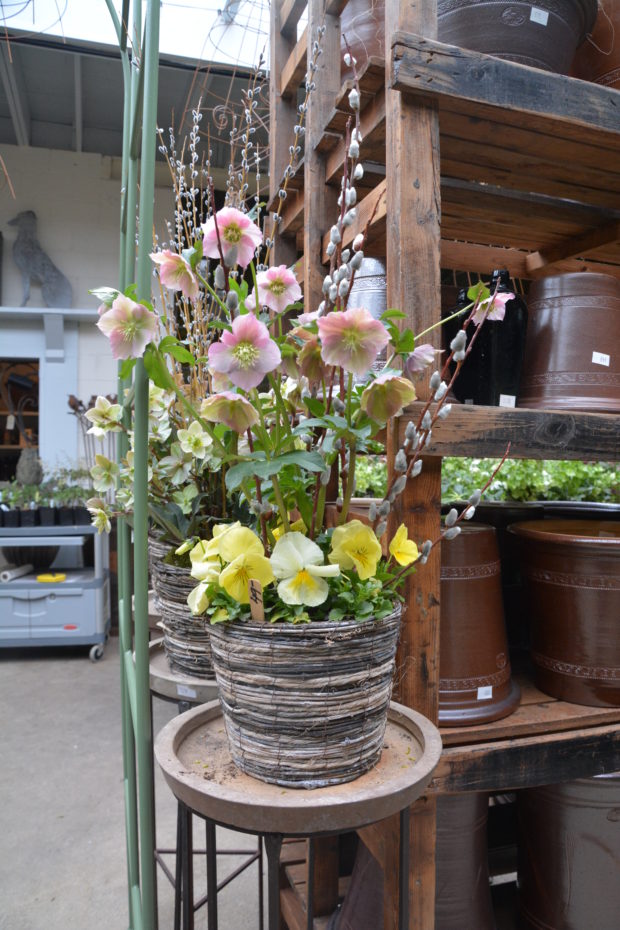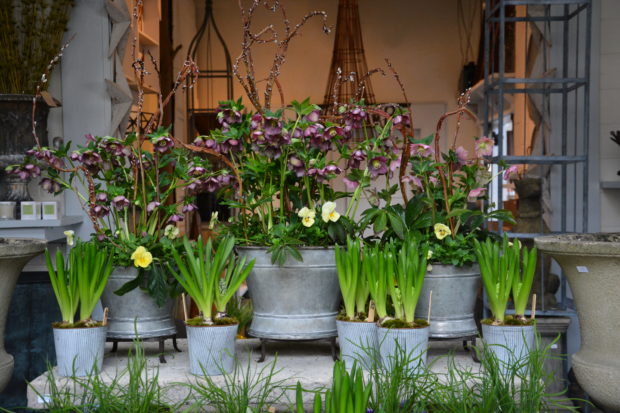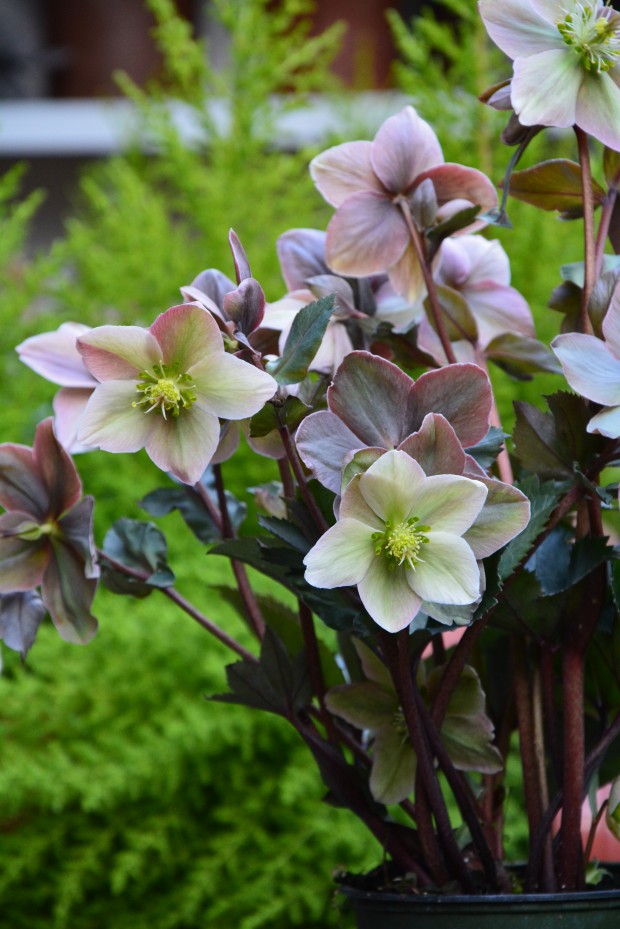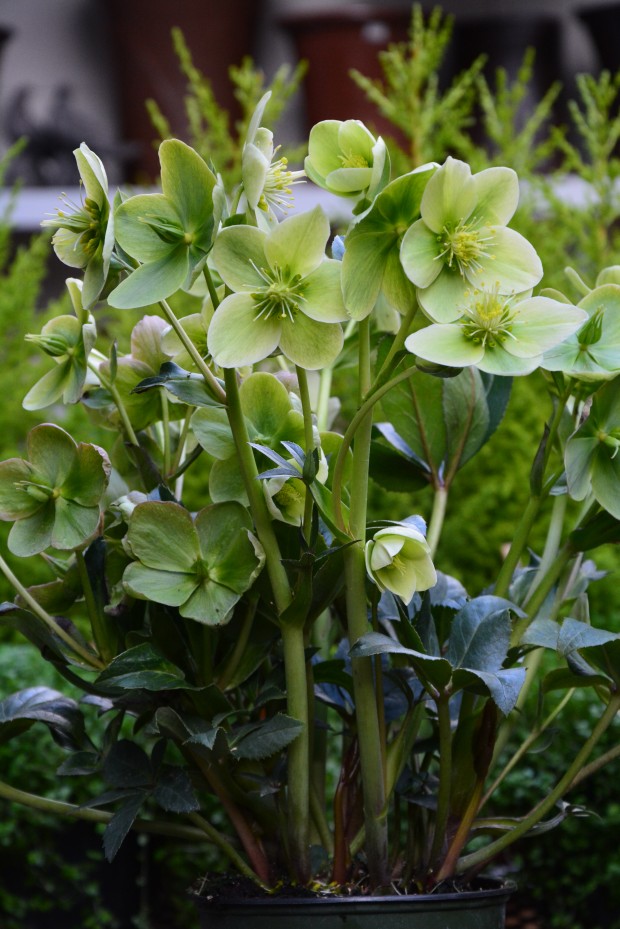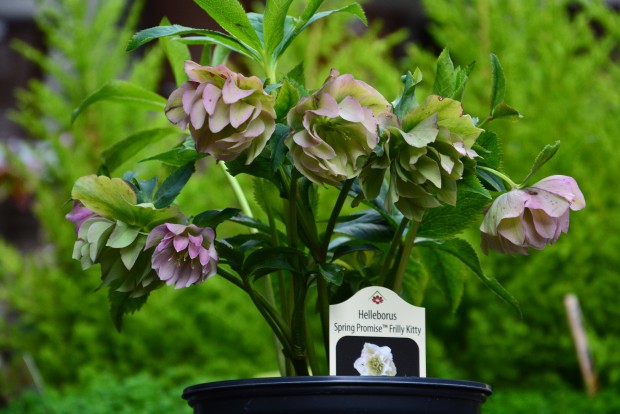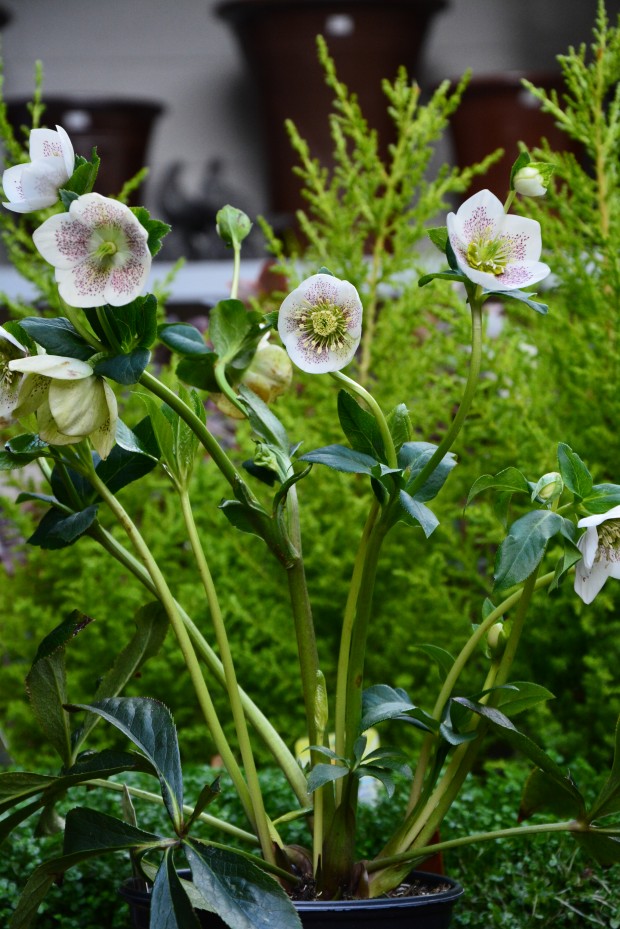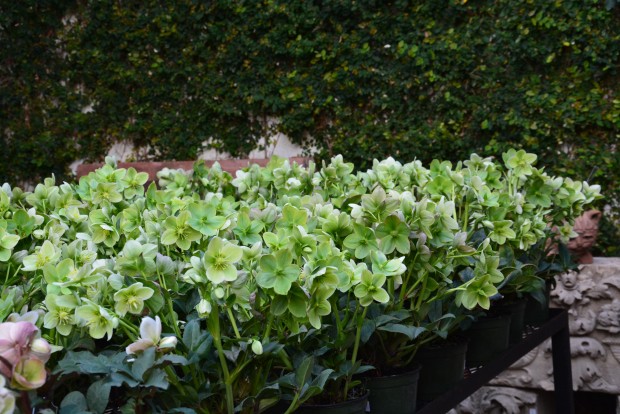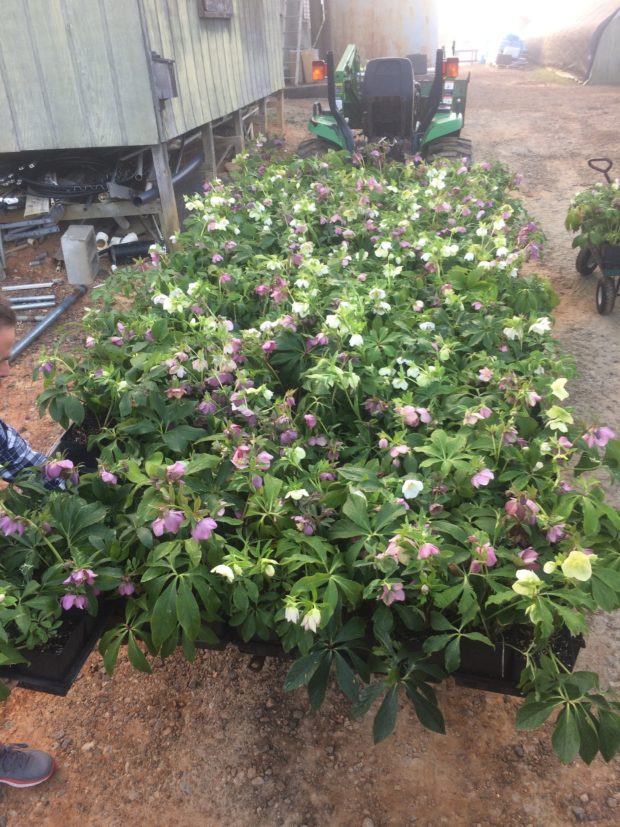 What’s better than waiting out the end of the Michigan winter is a road trip to Pine Knot Farms to pick up a collection of hellebores. After some discussion with Dick Tyler, I placed an order, and our David drove our sprinter there to pick them up. Pine Knot Farms has been breeding hellebores for a good many years. Their strains of helleborus hybridus are incredibly vigorous, strong blooming, and hardy in our zone. The book written by Judith and Dick Tyler, entitled “Hellebores: A Comprehensive Guide”, was and still is a comprehensive and succinct description of the genus Helleborus. It is an invaluable reference work, and I reach for it whenever I have a question about hellebores.
What’s better than waiting out the end of the Michigan winter is a road trip to Pine Knot Farms to pick up a collection of hellebores. After some discussion with Dick Tyler, I placed an order, and our David drove our sprinter there to pick them up. Pine Knot Farms has been breeding hellebores for a good many years. Their strains of helleborus hybridus are incredibly vigorous, strong blooming, and hardy in our zone. The book written by Judith and Dick Tyler, entitled “Hellebores: A Comprehensive Guide”, was and still is a comprehensive and succinct description of the genus Helleborus. It is an invaluable reference work, and I reach for it whenever I have a question about hellebores.
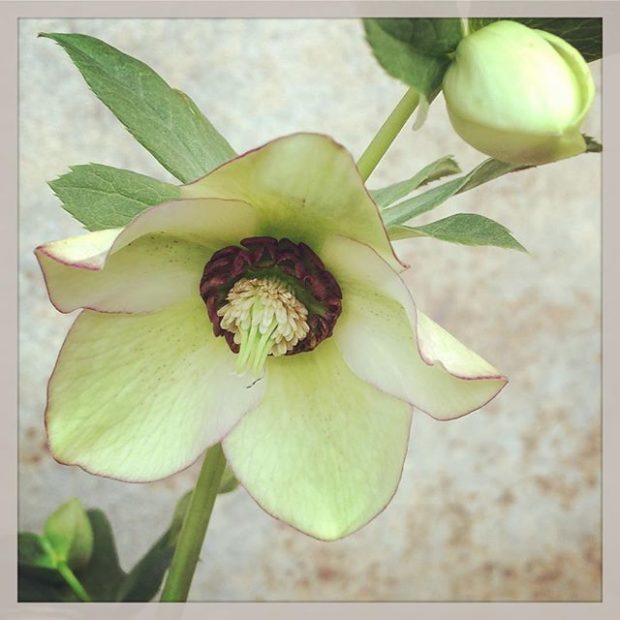 From Wikipedia, “Commonly known as hellebores, the Eurasian genus Helleborus consists of approximately 20 species of herbaceous or evergreen perennial flowering plants in the family Ranunculaceae, within which it gave its name to the tribe of Helleboreae”. Ha. I find the book by the Tyler’s to be considerably more engaging, and a lot more detailed. I am happy to say that Dick Tyler took the time and effort to give David a comprehensive tour of his nursery. If you are not near enough to Detroit Garden Works to shop his plants, he does ship. This is the last weekend of his hellebore festival, but he grows many thousands of plants. Just one of the many in our collection is pictured above in a photograph of Rob’s. For further information, check out their website. Pine Knot Farms hellebores
From Wikipedia, “Commonly known as hellebores, the Eurasian genus Helleborus consists of approximately 20 species of herbaceous or evergreen perennial flowering plants in the family Ranunculaceae, within which it gave its name to the tribe of Helleboreae”. Ha. I find the book by the Tyler’s to be considerably more engaging, and a lot more detailed. I am happy to say that Dick Tyler took the time and effort to give David a comprehensive tour of his nursery. If you are not near enough to Detroit Garden Works to shop his plants, he does ship. This is the last weekend of his hellebore festival, but he grows many thousands of plants. Just one of the many in our collection is pictured above in a photograph of Rob’s. For further information, check out their website. Pine Knot Farms hellebores
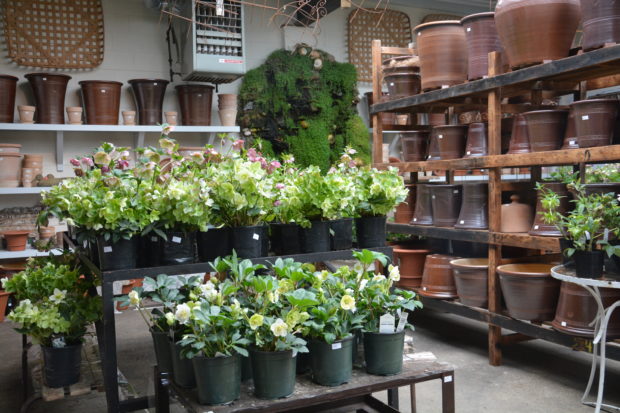 Though we purchase hellebores from a number of different growers from all over the US, I was especially interested in Dick Tyler’s plants for a good reason. Many of his strains of hellebores have helleborus hybridus as a prominent parent. Helleborus hybridus is in and of itself a plant of complex heritage. This is a major factor in its hardiness. They are commonly known as Lenten roses, which means they are spring blooming. The blooming shoots of my hellebores emerge from the ground in late March, and will begin to flower in April. As our spring weather is usually very cool, they are gloriously in bloom for quite some time. The flower itself is quite inconspicuous.. What appear to be petals are actually a modified calyx. Those petal-like structures will eventually turn green, and will persist on the plants for months.
Though we purchase hellebores from a number of different growers from all over the US, I was especially interested in Dick Tyler’s plants for a good reason. Many of his strains of hellebores have helleborus hybridus as a prominent parent. Helleborus hybridus is in and of itself a plant of complex heritage. This is a major factor in its hardiness. They are commonly known as Lenten roses, which means they are spring blooming. The blooming shoots of my hellebores emerge from the ground in late March, and will begin to flower in April. As our spring weather is usually very cool, they are gloriously in bloom for quite some time. The flower itself is quite inconspicuous.. What appear to be petals are actually a modified calyx. Those petal-like structures will eventually turn green, and will persist on the plants for months.
 The Christmas rose, or helleborus niger, is a winter blooming perennial. Winter blooming plants do quite well in mild climates, but have a tough go in Michigan. There are a number of clones which have some measure of parentage from helleborus niger that are able to survive our harsh winter and unpredictable early spring. We are able to buy the hellebore hybrid “Joseph Lemper” in full bloom in December. Customers who have kept them over the winter and planted them out in the spring report that the bloom stalks will come very early in the spring, but they do manage endure our early spring night temperatures. I prefer helleborus hybridus cultivars for my Michigan garden. I do have some intergeneric hellebore varieties whose bloom stalks began to grow several weeks ago. I have my fingers crossed that they will survive the forecast overnight low tonight of 12 degrees. For this reason, I do not cut off the tattered remains of last years foliage until it appears we will have night temperatures that are more moderate. That old foliage is like a blanket.
The Christmas rose, or helleborus niger, is a winter blooming perennial. Winter blooming plants do quite well in mild climates, but have a tough go in Michigan. There are a number of clones which have some measure of parentage from helleborus niger that are able to survive our harsh winter and unpredictable early spring. We are able to buy the hellebore hybrid “Joseph Lemper” in full bloom in December. Customers who have kept them over the winter and planted them out in the spring report that the bloom stalks will come very early in the spring, but they do manage endure our early spring night temperatures. I prefer helleborus hybridus cultivars for my Michigan garden. I do have some intergeneric hellebore varieties whose bloom stalks began to grow several weeks ago. I have my fingers crossed that they will survive the forecast overnight low tonight of 12 degrees. For this reason, I do not cut off the tattered remains of last years foliage until it appears we will have night temperatures that are more moderate. That old foliage is like a blanket.
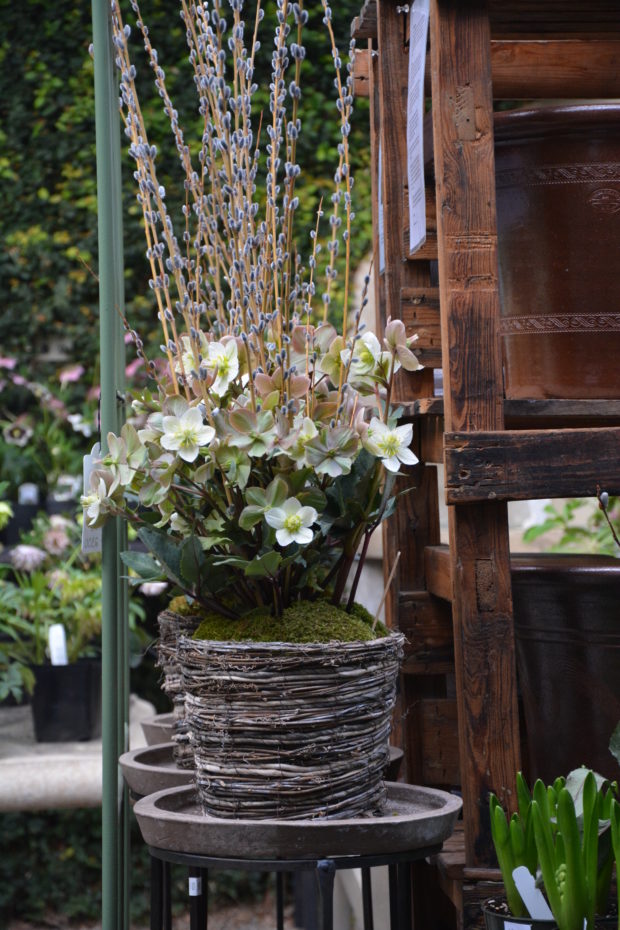 So what is one to do with one of our hellebores in full bloom when our night temperatures are so cold? They are actually quite obliging about a place indoors for a few weeks. We like to pot them up in a little something that is decorative. The green or black plastic pot that they are grown in will do, but why make do at the end of winter? Rob potted this hellebore in a basket, and topped it off with some mood moss. To follow are more pictures of his miniature spring gardens. If you are able to stop in and see them in person, I promise you will be enchanted.
So what is one to do with one of our hellebores in full bloom when our night temperatures are so cold? They are actually quite obliging about a place indoors for a few weeks. We like to pot them up in a little something that is decorative. The green or black plastic pot that they are grown in will do, but why make do at the end of winter? Rob potted this hellebore in a basket, and topped it off with some mood moss. To follow are more pictures of his miniature spring gardens. If you are able to stop in and see them in person, I promise you will be enchanted.
